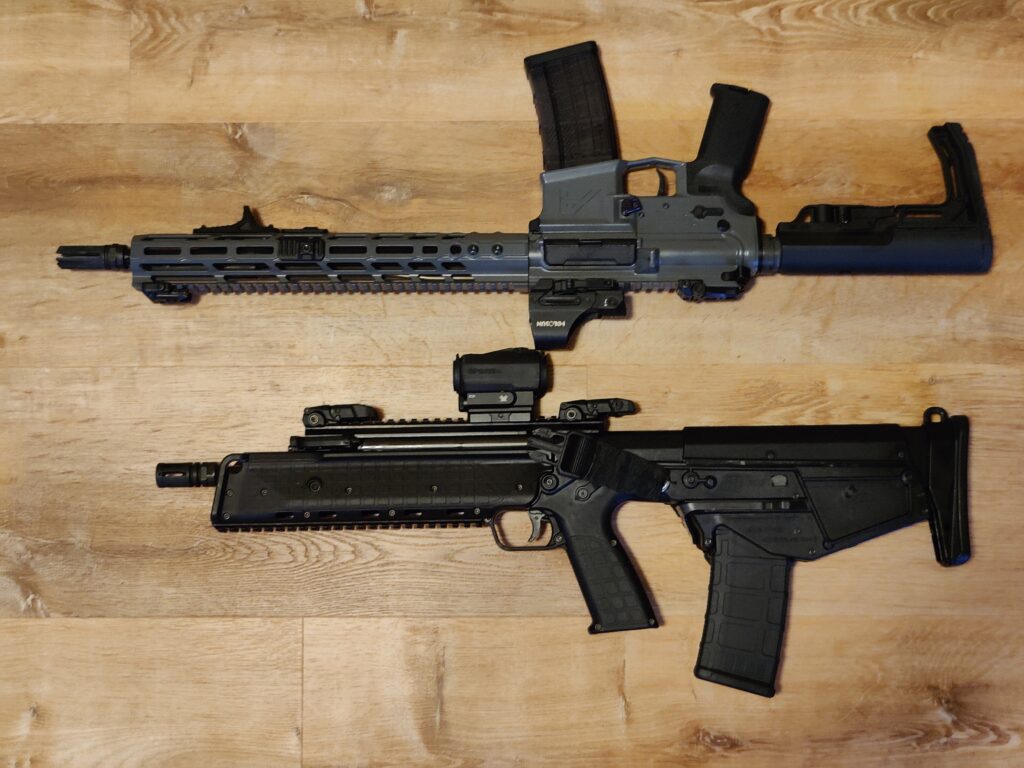Greetings From the Bullpup Timeline, Part 1

If there’s one activity that we gun guys (and gals) like more than shooting, it’s arguing about guns. We argue about brands, we argue about calibers, we argue about platforms, we argue about barrel lengths—for any aspect of a firearm, you’re sure to find someone outspokenly opinionated in one direction and someone else who will die on that proverbial hill fighting him. One of those hills that I find kind of strange is the “issue” of bullpup long guns. It’s no secret that I’m a bullpup fan myself, so I may be biased, but it seems like most of the people for whom the bullpup concept is nothing more than the butt of “backwards gun” jokes don’t have any objective reason for not liking bullpups. I’ve lost count of how many people I’ve heard call bullpup long guns bad or stupid with their only “reasoning” being that they just think the configuration is weird and it isn’t what they’re accustomed to. Left with no way to proselytize for the bullpup concept to those who have already made up their minds without ever using one, I have resorted to… extreme measures… to produce this blog post. Indeed, I have crossed over to the parallel reality in which bullpups became mainstream decades ago to plagiarize this blog post from the alternate-universe version of myself and returned to share it with you, finally answering the question no one asked: What if bullpups were the norm? Note: This is a joke. I am not aware of the existence of any actual parallel universes, even the one where Reagan never passed the Mulford Act. Unfortunately.
Why did the bullpup concept become dominant?
Hello and welcome to another post on the San Diego County Gun Owners blog. As all of you know, the world of military rifles underwent a paradigm shift between about the 1950s and the 1980s which saw “conventional” rifles (those with the breech located in front of the firing grip) displaced by the bullpups (those with the breech located behind the firing grip) we now know and love. Following the military trend, the civilian market also adopted the bullpup concept and applied it to other classes of firearms, such as bolt-action precision rifles, pistol-caliber carbines, pump-action and semi-automatic shotguns, and even pistols.
With such a preponderance of bullpup options on the market, then, the average person who carries a Boberg XR9-S and keeps a Kel-Tec KSG for home defense might never even wonder why the conventional layout has generally fallen out of favor. There isn’t a singular overarching reason, but multiple other advantages come together to make the bullpup concept more viable for many use cases. This post will cover just one of those advantages.
Compact Size
The impetus for the development of the bullpup concept—a reduction in overall length without a reduction in barrel length—remains its most obvious advantage.
In the United States, where long guns are subject to additional legal restrictions based on barrel length, a bullpup rifle or shotgun can be much shorter than a conventional counterpart while still meeting the legal minimum. While California and some other states have their own weird rules, the federal cutoff for a short-barreled rifle (SBR) is a 16” barrel and a 26” overall length. A rifle that meets those minima is subject to no additional restrictions, but a rifle with a 15.9” barrel or a 25.9” overall length is regulated like a machine gun.
The Kel-Tec RDB, pictured below, has a 17.3” barrel and an overall length of around 27” in its base configuration. Other variants exist, including the neutered “Hunter” model with no pistol grip or flash hider and an overall length greater than 30” for the California market.

As you can see from these photographs, the 17.3” RDB is much shorter than an AR-15 with a 14.5” barrel and a flash suppressor pinned and welded to meet the 16” minimum. Even with its stock fully collapsed (for transportation, as this position would be uncomfortable and impractical without body armor), the AR is still several inches longer despite having about three inches less barrel. The only other way you can make a rifle this short is with a folding stock, which just moves that bulk to the side of the gun when not in use instead of doing away with it altogether.
